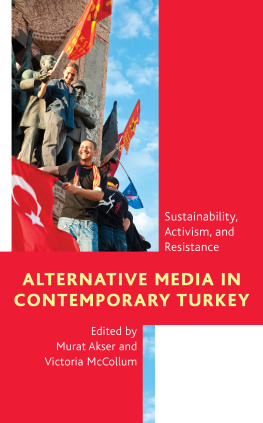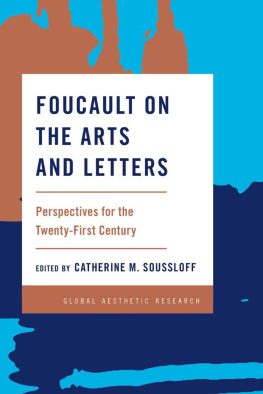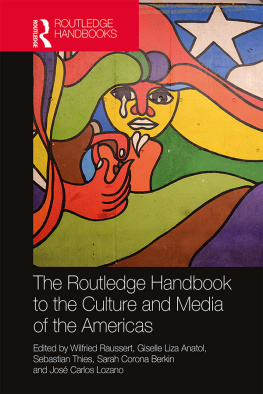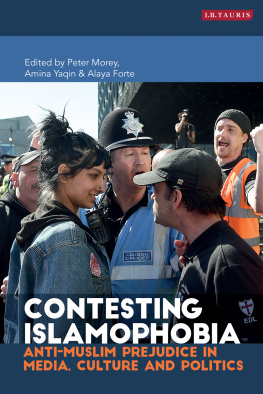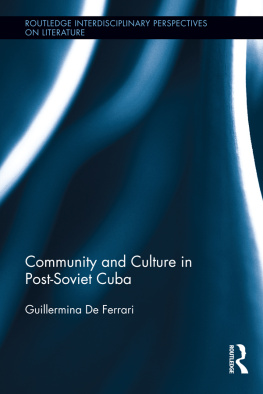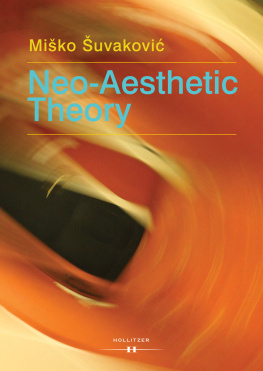What is Wrong with Us?
Essays in Cultural Pathology
Edited by Eric Coombes & Theodore Dalrymple
imprint-academic.com
2016 digital version converted and published by
Andrews UK Limited
www.andrewsuk.com
Copyright Imprint Academic, 2016
Individual contributions the respective authors 2016
The moral rights of the authors have been asserted. No part of this publication may be reproduced in any form without permission, except for the quotation of brief passages in criticism and discussion.
Imprint Academic, PO Box 200, Exeter EX5 5YX, UK
Preface
The present volume has its origins in a proposal first made several years ago, when a number of people were kind enough to suggest that an essay of mine deserved to be more widely known. It quickly became clear that widespread dissatisfaction with the level of public discussion - most obviously but far from uniquely, discussion of the visual arts (or what are labelled as such) - would motivate support for an attempt to get a little more intelligent criticism into the realm of public accessibility.
This collection of critical material is the outcome of that support, which has taken several forms, particularly, of course, that of offering to contribute or of responding to requests to do so. The collection is no more than a sample of intelligent observations from various viewpoints on cultural topics, by the possessors of independent and well-informed minds. Many important topics, entire areas of cultural life such as music, are inevitably missing, not because their importance is unrecognized, but simply because of the necessary limitations of a modest project. Nevertheless, we hope that what is said about specific areas or aspects of our culture will be found relevant, by analogy, with others.
Although the contributors are united in their disquiet about the condition of our culture, they have not been asked to support any specific view of our discontents, and are all writing about things that particularly concern them. This collection, therefore, is presented not as amounting to an overarching account, diagnosis or theory of our situation, but in the hope that the individual contributions will be of some interest, and at least provide food for thought. Nevertheless, in the introduction, I venture one or two more general observations about what may underlie the more specific manifestations of cultural malaise. But any readers whose intellectual curiosity or disquiet would lead them further in that direction are advised to read Roger Scrutons enormously impressive Modern Culture .
The editors are very grateful to the contributors. All have been as helpful as one could wish. I particularly wish to acknowledge Ian Robinson for unprompted encouragement at an early stage, and David Lee, who first suggested the idea of compiling a collection of essays. Theodore Dalrymple has not only contributed two essays, but has also, as co-editor, been unfailingly assiduous, and consistent in exercising his well-known astuteness. Both editors would like to record their appreciation of the efforts of David Lee, to whom we all indebted for continuing to produce, in the face of enormous difficulties, The Jackdaw -the only regular publication which consistently adopts a genuinely critical stance towards the imbecilities of the contemporary-art world.
Eric Coombes
Modern Croydon has a population four or five times greater than that of Renaissance Florence, yet I doubt that in half a millenniums time tourists will be flocking to it to marvel at its cultural achievements: its art, for example, or its architecture.
Mankinds advances in material well-being have never led automatically to an artistic flowering, but perhaps our own age is unequalled in its gulf between such advances and cultural shallowness. In Britain, at least, it seems as if there is an almost official ideology of crudity and vulgarity, often state-funded; and an aspiration to something higher is an embarrassment or, worse still, a sign of unpardonably elitist sentiment.
The essays in this book express the authors profound unease at our present cultural situation. They each do so through the examination of a single aspect of that situation and obviously no book can hope to be comprehensive. Neither do they offer a solution - indeed, they exclude top-down solutions. Rather they offer an appeal to us to bethink ourselves.
One of the difficulties they have is that, while in previous ages the moral or aesthetic judgement of the cultural elite might have been decried as poor, shallow or bad, in our age it is the very notion of judgement itself that is under attack. It is frequently denied that a higher and lower, a profound and superficial, a good and bad, actually exist, on the grounds that there is no unassailable metaphysical basis for distinguishing between them. This is a dishonest and self-serving philosophy, always used in the service of shallowness, that the authors of the essays in this book are concerned to refute.
I am grateful to all the authors, and to my fellow-editor, Eric Coombes, upon whom the bulk of the editorial work has fallen - and also for his most lucid introduction.
Theodore Dalrymple
Acknowledgement
The editors are most grateful to Mary Ann Coombes for her unstinting editorial assistance, and for undertaking the compilation of the index.
Note to readers
Some of these essays discuss works of visual art or features of the urban environment. In most cases, reproductions or relevant photographs can easily be found on the internet.
Notes on Contributors
Michael Bussell is a structural engineer, now retired. He worries that undue reliance on electronic technology will displace reasoned thought, as common sense becomes increasingly uncommon. He worked on the re-use and restoration of many older industrial structures, including Kings Cross and St Pancras Stations in London. Lecturing and writing on his structural interests include the 1997 book Appraisal of Existing Iron and Steel Structures .
Eric Coombes studied Fine Art at the University of Reading. His post-graduate work led to a Ph.D. thesis consisting of a philosophical discussion of visual representation. He was at Camberwell School of Art for many years, where he taught art history and aesthetics. Since retirement, he has tried to paint and write, and has contributed substantial pieces to The Jackdaw .
Theodore Dalrymple is a retired prison doctor and psychiatrist who for many years wrote a column in the Spectator . He has written for the City Journal of New York for more than 20 years. His latest book, a collection of essays published in the New Criterion , is Good and Evil in the Garden of Art (Encounter).
Michael John DiSanto is Associate Professor of English at Algoma University in Canada. He is the author of Under Conrads Eyes: The Novel as Criticism , the editor of The Complete Poems of George Whalley , and with Brian Crick, the co-editor of Selected Literary Criticism of Matthew Arnold and D.H. Lawrence: Selected Criticism.
Mark Dooley is an Irish philosopher, journalist and broadcaster. He has held lectureships at the National University of Ireland, Maynooth, and at University College Dublin, where he was also the John Henry Newman Scholar in Theology. Since 2006, he has been a columnist and critic with the Irish Daily Mail . His books include works on Kierkegaard, Derrida and three volumes on Roger Scruton. In 2011, he published Why Be a Catholic? , a widely acclaimed defence of his Catholic faith. His latest work, Moral Matters: A Philosophy of Homecoming , was published in 2015.
Laura Gascoigne is a reviewer and commentator on the visual arts. A former editor of Artists & Illustrators , she is art critic of The Tablet and contributes regularly to Apollo , RA Magazine , The Oldie and Country Life . Her bimonthly column in The Jackdaw is frequently focused on the contemporary art worlds abuse of the English language.
Next page

